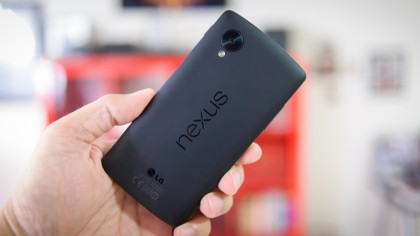Why you can trust TechRadar
The price
Ultimately it's the price of the Google Nexus 5 which makes it an attractive proposition, and while the OnePlus One and co. may be trying to encroach on its territory, Google's own-brand is still the dominant force in the high-spec, low-cost arena.
$400 for a premium Android smartphone that's this good is very good. Even at around $450 for the 32GB version, the Nexus 5 is still tempting.

While Apple is comfortable with its premium pricing strategy, the Nexus 5 has really put pressure on the competing Android flagships.
The Samsung Galaxy S4, HTC One, and LG G2 have all witnessed dramatic price cuts over the past 12 months, while the Nexus 5 has managed to retain its sale price much better.
And now there's the likes of the Samsung Galaxy S5, LG G3, Sony Xperia Z3 and HTC One M8 - all costing around $900 and a new wave of devices like the Samsung Galaxy S6 and HTC One M9 now on the market.
Whatever way you cut it, the Nexus 5 is a lot of phone for your money, and it looks like a real attempt to drive prices down, which can only be a good thing for consumers.
However, we've since seen the OnePlus One - better specs than the Nexus 5 and coming in even cheaper - is this the phone Google should be worried about perhaps?
Sign up for breaking news, reviews, opinion, top tech deals, and more.

The camera
It would be fair to say that the camera in the Nexus 5 was a bit of a disaster on release. It's an 8MP shooter with optical image stabilization that's intended to be a good substitute for a point-and-shoot camera.
There's nothing wrong with the hardware, but the software let it down badly. The camera was far too slow to focus and could be slow to launch, which killed your chances of capturing those spontaneous moments with friends and family.

In ideal conditions the Nexus 5 camera could capture stunning shots, but how often do you get ideal conditions?
Google listened to the criticism and quickly released an update to deal with the slow focus issue by balancing speed and image quality a bit better.
Where previously it would take forever to capture a shot, as you waited for the auto-focus, especially in low light conditions, or with fast-moving subjects, after the update it's much faster.

It also enables the camera app to load a little faster, and improved the contrast to produce more vibrant colours.
Further updates to the Android camera application have also seen the UI changed a little, as well as the addition of a new feature - Lens Blur - and an easier to use settings menu. I was hoping Lollipop would help the camera too, but it hasn't.
Results are generally respectable, but it's still not the greatest shooter on the market. You can take a look for yourself in the camera section later in this review.
Speed
The Nexus 5 is really about speed and power. The snappy processor dovetails with the Android 5.0 platform beautifully.
Google did not cut any corners with the quad-core 2.3GHz Snapdragon 800 processor. It was a cutting-edge CPU at the time that had been paired with the Adreno 330 GPU.

That's the same combination you'll find in the LG G2, Xperia Z1, and some variants of the Galaxy S4 andGalaxy Note 3.
While the power setup in the Nexus 5 has now been usurped by more power efficient and feature packed offerings, it's still capable of handling pretty much anything you throw at it.
